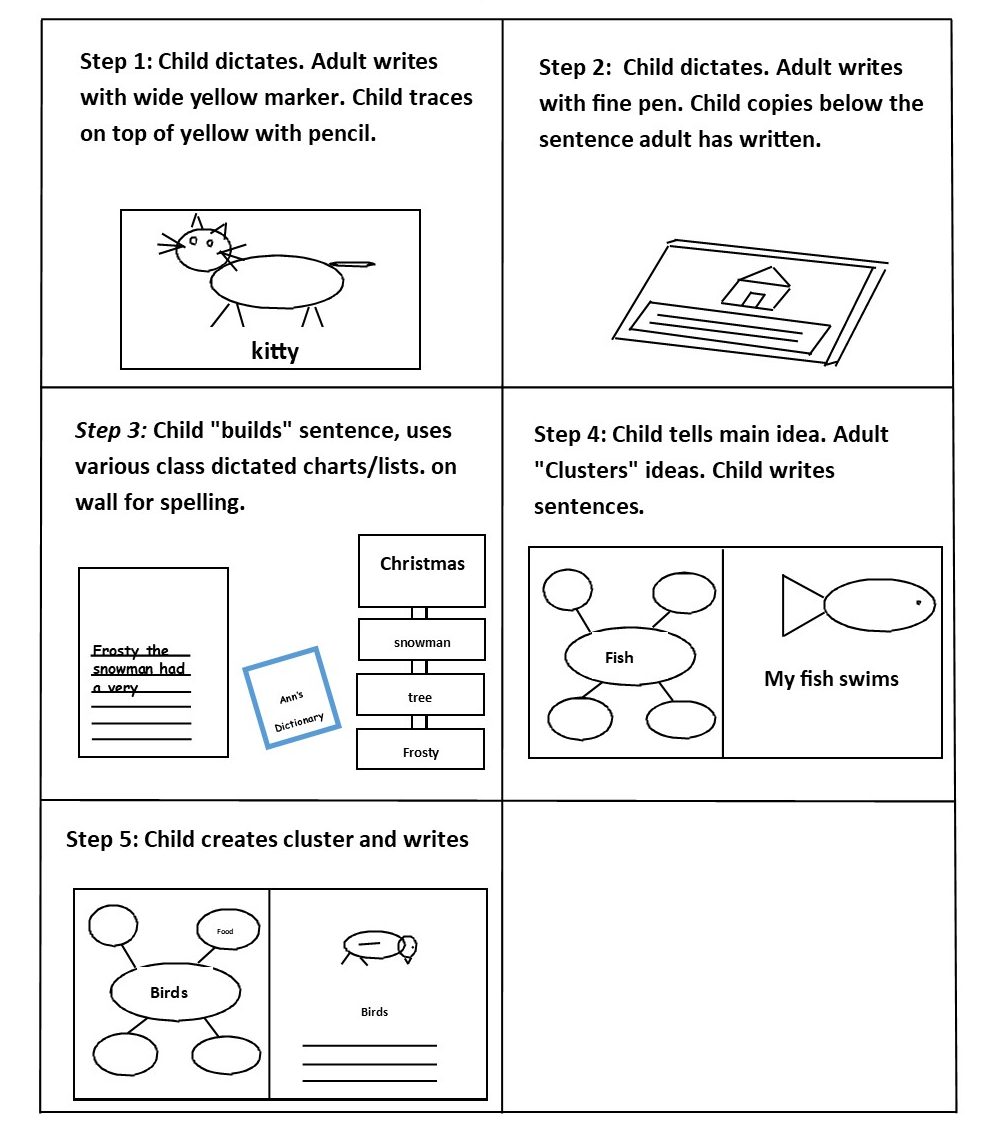This example is from Karen Lamb, the first-grade teacher “A,” in my study of Outstanding Effective Classrooms. I spent many hours over several weeks observing her class in action. She had a stellar reputation in her district and was the most impressive teacher I have ever had the pleasure of observing. She had devised the sequential approach below for her children, who were all native English speakers entering the primary grades at a more advanced skill level than those in my own classroom.
Here, the child has a word ring only at Steps 1 -3, where only the word is written, no sentence. Sentences and duplicates of their word are written by an adult directly onto the child’s writing book for them to illustrate. So there was no duplicate to be glued by the child. The child practices writing by first tracing and later copying below what the adult has written. The only drawback is that there are no sentences on the child’s word ring to use as a source for spelling later, as the books of a few pages are taken home regularly as soon as they are filled. But Karen’s classroom was full of class dictated charts and other word lists for children to use. And each child had their own dictionary, where the adults wrote words for them.
This approach worked very well for these children, as they came in already knowing more about print than the children in my classroom. And the main benefit of her approach was that writing directly into the child’s book streamlined the process, for the adults could circulate around the room as children were working and simply sit down next to a child who was already drawing. There they would write the child’s dictation, read it with them, and then were able to move swiftly on. So this definitely saved teacher time, which she used for the more in-depth work on longer-term projects with a few children each day.
This classroom hummed with purposeful activity, the children appeared to thoroughly enjoy their writing, were very involved with all their work, and progressed very well. They brought their writing, to the teacher as soon as it was finished, and she drew a happy face on their page. Then the children signed off on a “must do” chart and went on to another task, which involved math. Her writing sequence is shown below:
